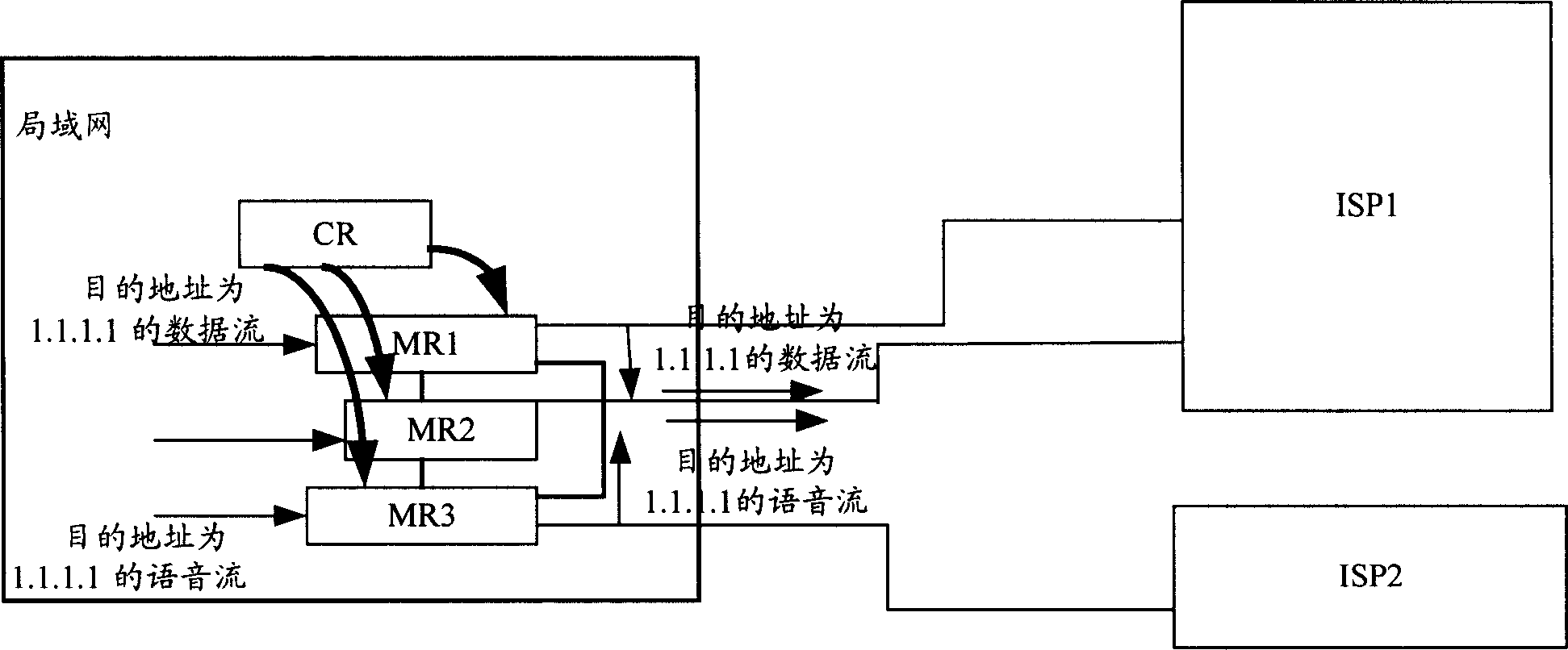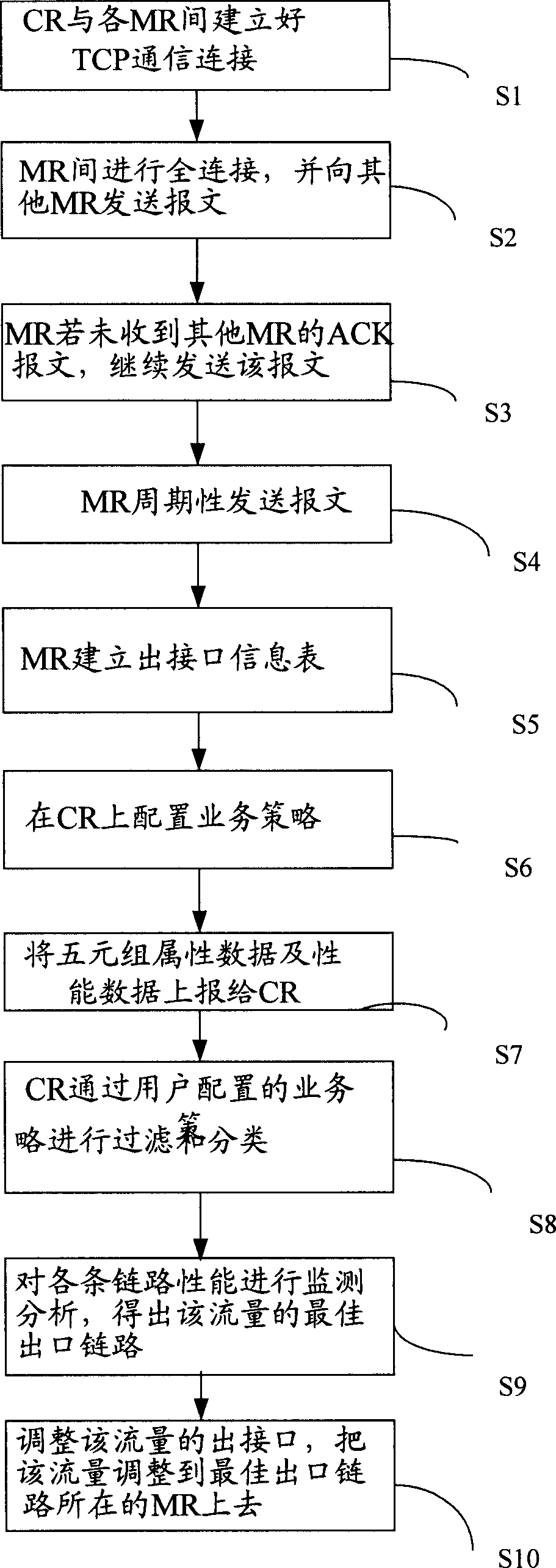Method for selecting exit link according to flow and routing equipment of converting flow
An egress link and routing technology, applied in the direction of digital transmission systems, electrical components, transmission systems, etc., can solve problems such as inability to realize, inability to distinguish traffic, and inability to support flow control, etc., to achieve increased usability, flexible egress flow control, The effect of simplifying design difficulty
- Summary
- Abstract
- Description
- Claims
- Application Information
AI Technical Summary
Problems solved by technology
Method used
Image
Examples
Embodiment Construction
[0023] The invention provides a method for automatically optimizing different egress links for business flows with different attributes according to performance requirements.
[0024] The method for selecting an egress link for traffic provided by the present invention establishes a communication connection between the control routing device and the member routing device, so that the control routing device can communicate with the member routing device in time after analyzing the business strategy formulated by the user, so that it can communicate with the member routing device in time. Adjust the egress link of each service flow. Each member routing device learns the connection information between the member routing device and other member routing devices by sending message information to each other, the control routing device obtains the connection information, and when receiving the flow information of the service flow, according to the pre-configured The service policy det...
PUM
 Login to View More
Login to View More Abstract
Description
Claims
Application Information
 Login to View More
Login to View More - R&D
- Intellectual Property
- Life Sciences
- Materials
- Tech Scout
- Unparalleled Data Quality
- Higher Quality Content
- 60% Fewer Hallucinations
Browse by: Latest US Patents, China's latest patents, Technical Efficacy Thesaurus, Application Domain, Technology Topic, Popular Technical Reports.
© 2025 PatSnap. All rights reserved.Legal|Privacy policy|Modern Slavery Act Transparency Statement|Sitemap|About US| Contact US: help@patsnap.com



